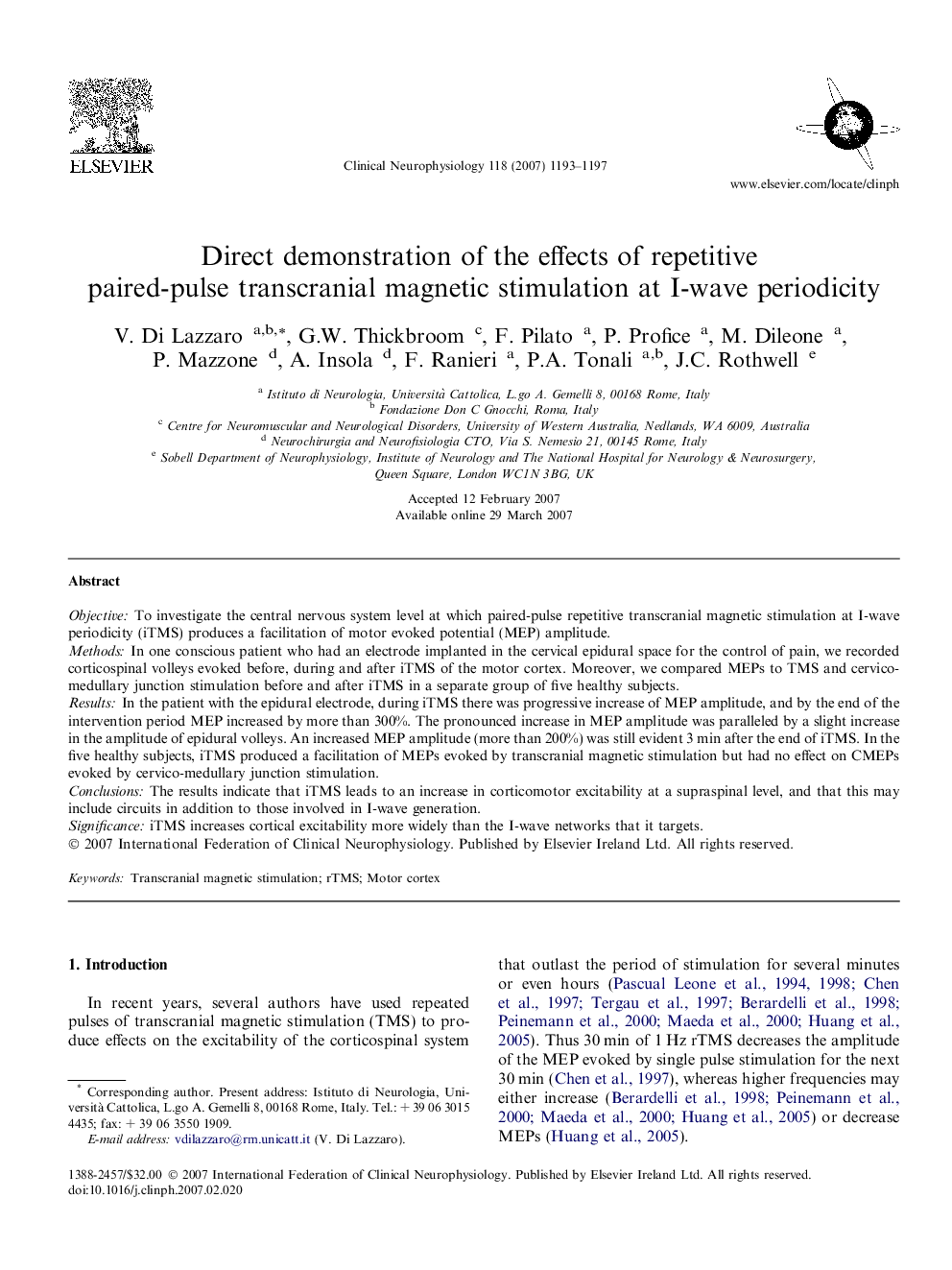| Article ID | Journal | Published Year | Pages | File Type |
|---|---|---|---|---|
| 3047694 | Clinical Neurophysiology | 2007 | 5 Pages |
ObjectiveTo investigate the central nervous system level at which paired-pulse repetitive transcranial magnetic stimulation at I-wave periodicity (iTMS) produces a facilitation of motor evoked potential (MEP) amplitude.MethodsIn one conscious patient who had an electrode implanted in the cervical epidural space for the control of pain, we recorded corticospinal volleys evoked before, during and after iTMS of the motor cortex. Moreover, we compared MEPs to TMS and cervico-medullary junction stimulation before and after iTMS in a separate group of five healthy subjects.ResultsIn the patient with the epidural electrode, during iTMS there was progressive increase of MEP amplitude, and by the end of the intervention period MEP increased by more than 300%. The pronounced increase in MEP amplitude was paralleled by a slight increase in the amplitude of epidural volleys. An increased MEP amplitude (more than 200%) was still evident 3 min after the end of iTMS. In the five healthy subjects, iTMS produced a facilitation of MEPs evoked by transcranial magnetic stimulation but had no effect on CMEPs evoked by cervico-medullary junction stimulation.ConclusionsThe results indicate that iTMS leads to an increase in corticomotor excitability at a supraspinal level, and that this may include circuits in addition to those involved in I-wave generation.SignificanceiTMS increases cortical excitability more widely than the I-wave networks that it targets.
